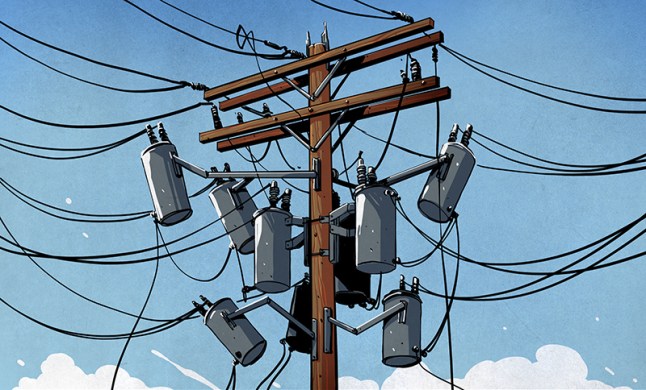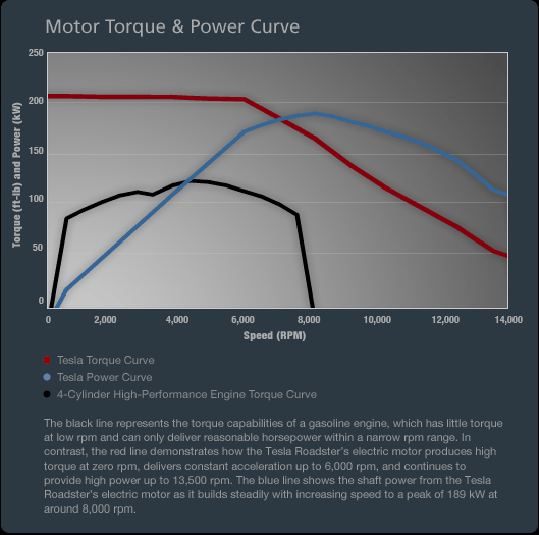Forum Discussion
56 Replies
- Cloud_DancerExplorer IIThe consumer does not design the dern thing. We just buy what we can afford, from whatever is available, that will do the job. For the best Dutch Star DP that I could afford, I paid extra for the engine option with the most torque. The Spartan chassis has worked out well. Too bad the roof design was so substandard. The failed roof really did a number on the ceiling. I'm not complaining because everyone, right away, tells me it's my fault. So, whenever I get to check out a new ALL-electric DP wannabe, I'll thoroughly study the design of the roof FIRST!
- MEXICOWANDERERExplorer


I can see it now
"When will the power come back on?"
"Quien Sabe? But it is said there is a lottery being started to guess the date--millions and millions of pesos being bet" - pnicholsExplorer II
4x4ord wrote:
Yes when you consider the fact that the Tesla has a 0-18000 rpm operating range it is very impressive.
Good grief!!
How did the Tesla engineers design so as to control the gyroscopic effect on the vehicle with masses sometimes rotating in those high RPM ranges?
For instance, I have carried my Honda generator around while it's running at it's 3600 RPM - and the effect from it jurking my arm around is profound.
(Boy-o-boy ... are we off topic or what!) - jharrellExplorer
valhalla360 wrote:
I did a little checking and it looks like they limit torque at higher RPM to control thermal problems. The motor could keep up the torque but it would lower life expectancy. So the drop off after 6000 rpm is electronically applied. They could have added better cooling and kept the torque up...but the car is already overpowered.
A couple of notes:
- At zero RPM, it by definition, you don't have 2hp.
- The graph is misleading as they are comparing it to a drastically less powerful gas engine. I'm guessing they used a turbo engine as most torque curves are much more rounded and will result in a wider power HP band (they left the HP off the chart...presumably to help with the misleading).
Of course they limit power otherwise it would pull too much current and things start melting and catching fire. Its not that the motor won't try, it will accept the power as any hunk of metal would.
Yes zero rpm is 0 hp, but an electric motor has usable hp from 1 to your gas engines stall speed. A 3/4 hp pump motor might have a 4hp peak as it pulls large amounts of current during startup from 0 to operating rpm. It cannot sustain that peak without damage, so its operating or rated hp is much lower.
The point with the graph is the rpm range, a more powerful gas engine still does not have a larger rpm range, just more torque and power in that narrow rpm range. Again the electric motor produces a relatively flat power curve over an rpm range that entirely encompass a gas engines operating range. It doesn't come in until 6000 rpm the redline of many gas engines, so they just gear it down without the need for gear shifting. - larry_cadExplorer II
valhalla360 wrote:
jharrell wrote:
Not sure what electric motors you are looking at but this is not my understanding. An induction motor such as on a typical electric pump will pull current based on load exceeding its rated hp if needed at any rpm (perhaps tripping a breaker or overheating). The locked rotor torque and pull up torque can be much higher than rated torque in order to bring the motor up to operating speed.
I guess one issue is the case of a set speed induction motor is how hp is rated between gas and electric, gas is peak, while the electric is operating hp. A 3/4 hp electric motor may have a peak of well over 2 hp from zero to operating speed.
When you get into variable speed electric motor such as those used in cars the power band is still far superior. For instance Tesla has peak hp at 8000 rpm but produces more than 80% of peak from 6000-13,000 rpm, a 7000 rpm range that is an rpm range greater than the entire operating range of many gas engines. Hence the need for only a single speed transmission:
I did a little checking and it looks like they limit torque at higher RPM to control thermal problems. The motor could keep up the torque but it would lower life expectancy. So the drop off after 6000 rpm is electronically applied. They could have added better cooling and kept the torque up...but the car is already overpowered.
A couple of notes:
- At zero RPM, it by definition, you don't have 2hp.
- The graph is misleading as they are comparing it to a drastically less powerful gas engine. I'm guessing they used a turbo engine as most torque curves are much more rounded and will result in a wider power HP band (they left the HP off the chart...presumably to help with the misleading).
They must reduce torque at high RPM in order to limit available HP at high RPM. (check the torque equation). If torque remained constant over the high RPM range, the HP would continue to increase and eventually the motor mechanical components would simply break! The motor would self destruct. This is typical for a variable frequency motor and drive application. The motor is built from components that will break eventually. Don't go beyond that point. Ask a top fuel dragster owner!! - valhalla360Navigator
jharrell wrote:
Not sure what electric motors you are looking at but this is not my understanding. An induction motor such as on a typical electric pump will pull current based on load exceeding its rated hp if needed at any rpm (perhaps tripping a breaker or overheating). The locked rotor torque and pull up torque can be much higher than rated torque in order to bring the motor up to operating speed.
I guess one issue is the case of a set speed induction motor is how hp is rated between gas and electric, gas is peak, while the electric is operating hp. A 3/4 hp electric motor may have a peak of well over 2 hp from zero to operating speed.
When you get into variable speed electric motor such as those used in cars the power band is still far superior. For instance Tesla has peak hp at 8000 rpm but produces more than 80% of peak from 6000-13,000 rpm, a 7000 rpm range that is an rpm range greater than the entire operating range of many gas engines. Hence the need for only a single speed transmission:
I did a little checking and it looks like they limit torque at higher RPM to control thermal problems. The motor could keep up the torque but it would lower life expectancy. So the drop off after 6000 rpm is electronically applied. They could have added better cooling and kept the torque up...but the car is already overpowered.
A couple of notes:
- At zero RPM, it by definition, you don't have 2hp.
- The graph is misleading as they are comparing it to a drastically less powerful gas engine. I'm guessing they used a turbo engine as most torque curves are much more rounded and will result in a wider power HP band (they left the HP off the chart...presumably to help with the misleading). - jharrellExplorer
MEXICOWANDERER wrote:
Compared to the fact Quicksilver needs to recharge every 2,000 miles means something as well.
Nothing a 4 megawatt-hour battery can't solve plus a 12 megawatt charger to get back on the road in 15 minutes... - MEXICOWANDERERExplorerCompared to the fact Quicksilver needs to recharge every 2,000 miles means something as well.
- 4x4ordExplorer IIIYes when you consider the fact that the Tesla has a 0-18000 rpm operating range it is very impressive.
- jharrellExplorer
4x4ord wrote:
I agree that there are reasons to appreciate the capabilities of an electric motor. The only point i was making is that stating an electric motor has the ability to generate 80% of its peak power over a 7000 rpm operating range doesn't mean much when that operating range is from 6000 to 13000 rpm.
Sorry I disagree the ability for the motor to run 0-18000 rpm while generating peak power over the middle of its range is a big reason why it doesn't need a multi speed transmission, along with 0 rpm max torque.
I believe Teslas a geared to reach max power between 40 and 70 mph. THe semi is interesting it looks like they are doing 23:1 on one axle and 19:1 on the other allowing an electronic blending of the ratio. Either way more than double the torque multiplication of the model 3 max power will come in much lower probably 20mph.
About Technical Issues
Having RV issues? Connect with others who have been in your shoes.24,344 PostsLatest Activity: Dec 26, 2025